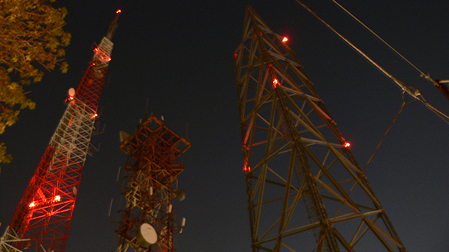ONE Media: Protect NextGen TV from White Space Interference
Sinclair company urges FCC to consider WSD impact on single frequency networks

WASHINGTON—ONE Media LLC has asked the FCC to consider the impact that the use of white space devices in the broadcast band could have on the deployment of ATSC 3.0 (aka “NextGen TV”).
The company—a division of Sinclair Broadcast Group focused on NextGen TV—reminded the commission in comments this week that terrestrial over-the-air broadcasting is still a critical asset to the nation’s communications infrastructure. The commission is seeking public comment on the viability of expanding the use of unlicensed devices in unused parts of the broadcast spectrum (aka “white space devices” or WSD).
“Terrestrial broadcast deployment is not frozen in time to the existing licensed stations; the platform is rapidly evolving,” the company said. “To that end, the commission must ensure that broadcasters can use their spectrum to realize the benefits inherent in the transition to ATSC 3.0 fully, while continuing to meet their public interest responsibilities.
“Broadcasters provide significant public interest benefits with their use of licensed channels,” ONE Media added. “The deployment of NextGen TV services promises compelling increases to those public services. The commission should further ensure that all parties—broadcasters, WSD providers and the commission itself—have the practical tools necessary to calculate interference theoretically and in the field.”
As NextGen TV rolls out across the U.S. this year, a number of broadcasters are considering using signal frequency networks (aka “distributed transmission systems”) to expand and improve signal coverage in their markets. As opposed to traditional transmission setups that employ a single transmission site and repeaters to enhance coverage, SFNs use multiple transmitters on the same frequency.
ONE Media asked the FCC to ensure that WSDs don’t take priority over existing licensed operations, and if they do interfere, the WSDs should cease operations, adding that NextGen TV signals may be especially vulnerable to interference while stations are transitioning to ATSC 3.0 because multiple stations in a market will be cooperating in “co-hosting” local OTA signals.
“In the ATSC 3.0 transition, some host stations may not be able to handle all signals, which in turn may require these stations to shift to a less robust (but permissible) modulation scheme,” the company wrote. “Under these circumstances, the modified modulation scheme could leave the coverage area more susceptible to interference from WSDs. It is critical that the commission again make clear that even under such circumstances, WSDs remain obligated to prevent harmful interference and cease operations where necessary to do so.”
Get the TV Tech Newsletter
The professional video industry's #1 source for news, trends and product and tech information. Sign up below.
ONE Media suggested that “at a minimum” the FCC’s TVStudy should be modified to account for WSD registration information available in the TV White Space Database.
“Broadcasters could better predict potential interference if the commission also defines an extension to TVStudy showing benchmark desired-to-undesired ratios (“D/U ratios”),” the company said.
The FCC also has a separate proceeding seeking public comment on the use of SFNs for terrestrial broadcasting.
For more information on ATSC 3.0, visit TVT’s hub page on NextGen TV.
Tom has covered the broadcast technology market for the past 25 years, including three years handling member communications for the National Association of Broadcasters followed by a year as editor of Video Technology News and DTV Business executive newsletters for Phillips Publishing. In 1999 he launched digitalbroadcasting.com for internet B2B portal Verticalnet. He is also a charter member of the CTA's Academy of Digital TV Pioneers. Since 2001, he has been editor-in-chief of TV Tech (www.tvtech.com), the leading source of news and information on broadcast and related media technology and is a frequent contributor and moderator to the brand’s Tech Leadership events.

